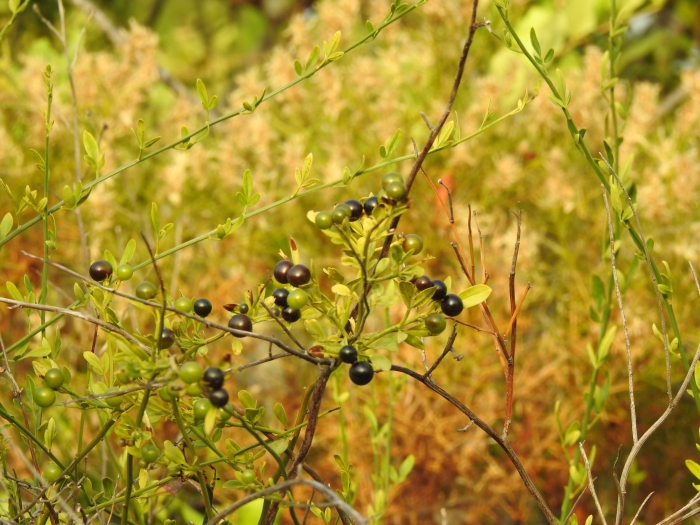Common Yellow Jasmine
(Chrysojasminum fruticans)
Common Yellow Jasmine (Chrysojasminum fruticans)
/
/

Duarte Frade
CC BY 4.0
Image By:
Duarte Frade
Recorded By:
Copyright:
CC BY 4.0
Copyright Notice:
Photo by: Duarte Frade | License Type: CC BY 4.0 | License URL: http://creativecommons.org/licenses/by/4.0/ | Rights Holder: Duarte Frade | Publisher: iNaturalist | Date Created: 2021-07-23T06:24:24-07:00 |















































Estimated Native Range
Summary
Chrysojasminum fruticans, commonly known as Common Yellow Jasmine, is an evergreen or semi-deciduous shrub native to open woodlands and rocky sites in the Mediterranean region. It typically grows to a height of 1-6 feet (0.3-1.8 meters) and a width of 1-3 feet (0.3-0.9 meters). This shrub is characterized by its arching branches and bright yellow, fragrant flowers that bloom in the spring and fall, adding a splash of color and pleasant scent to the garden. The flowers are particularly showy, making it a popular ornamental choice. Its leaves are dark green and glossy, adding to its visual appeal throughout the year.
Common Yellow Jasmine is valued for its ease of maintenance and the vibrant color it brings to landscapes. It is often used in border planting, as a ground cover, or trained on trellises. It can also be grown in containers, making it versatile for various garden designs. This plant prefers full sun to part shade and requires well-drained soil, though it can tolerate a range of soil types. It benefits from regular watering, especially during dry periods. While generally pest-free, it can occasionally suffer from aphids or scale insects. Pruning after flowering can help maintain its shape and promote vigorous growth.CC BY-SA 4.0
Common Yellow Jasmine is valued for its ease of maintenance and the vibrant color it brings to landscapes. It is often used in border planting, as a ground cover, or trained on trellises. It can also be grown in containers, making it versatile for various garden designs. This plant prefers full sun to part shade and requires well-drained soil, though it can tolerate a range of soil types. It benefits from regular watering, especially during dry periods. While generally pest-free, it can occasionally suffer from aphids or scale insects. Pruning after flowering can help maintain its shape and promote vigorous growth.CC BY-SA 4.0
Plant Description
- Plant Type: Shrub
- Height: 3-6 feet
- Width: 1-3 feet
- Growth Rate: Moderate
- Flower Color: Yellow
- Flowering Season: Spring, Fall
- Leaf Retention: Evergreen
Growth Requirements
- Sun: Full Sun, Part Shade
- Water: Medium
- Drainage: Medium, Fast
Common Uses
Bird Garden, Border Plant, Butterfly Garden, Deer Resistant, Drought Tolerant, Fragrant, Groundcover, Hummingbird Garden, Low Maintenance, Showy Flowers, Street Planting
Natural Habitat
Open woodlands and rocky sites in the Mediterranean region
Other Names
Common Names: Yellow Jasmine, Wild Jasmine
Scientific Names: , Jasminum fruticans, Chrysojasminum fruticans, Jasminum fruticosum, Jasminum mariae, Jasminum heterophyllum, Jasminum fruticans var. mariae, Jasminum fruticans var. speciosum, Jasminum luteum, Jasminum frutescens
GBIF Accepted Name: Chrysojasminum fruticans (L.) Banfi